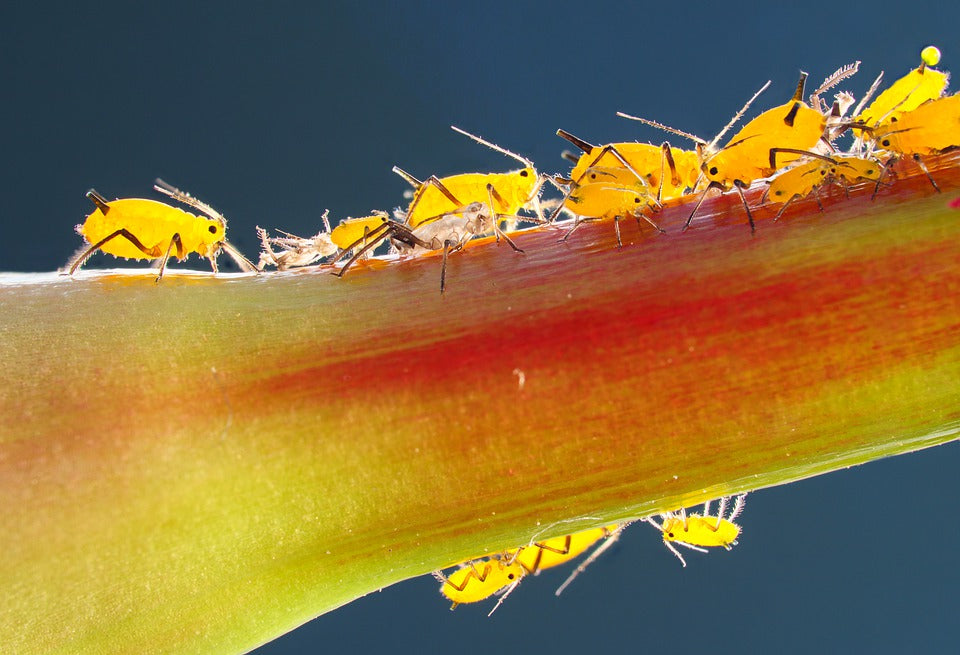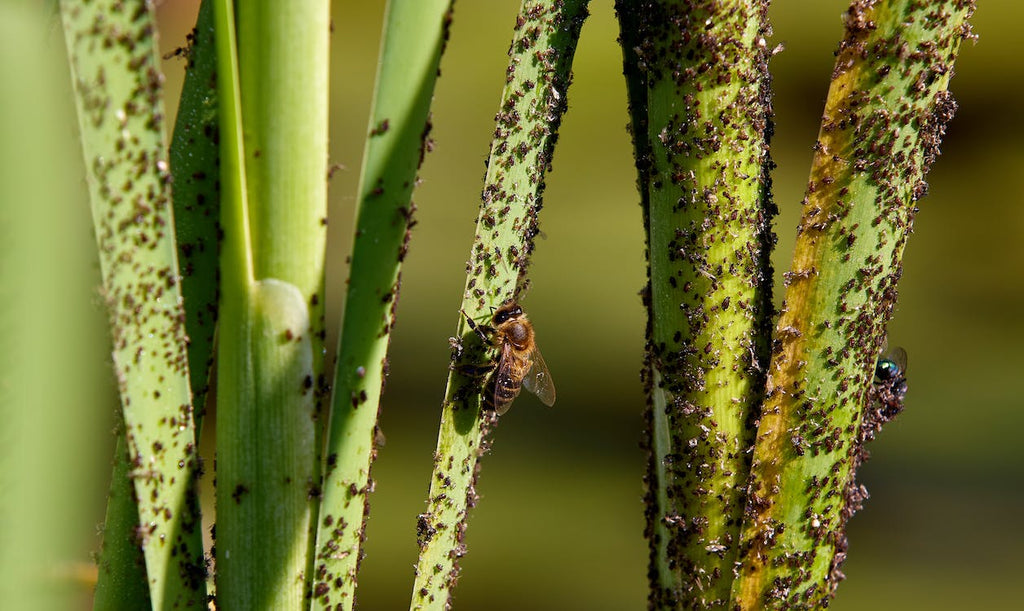
Summer 2023 has thus far been an interesting gardening season. With unusual weather across much of the US and Canada, many gardeners have faced both challenges and opportunities this year. It’s been an especially interesting year for garden pests—many unwanted bugs have made a resurgence! Among these are aphids, tiny, squish-bodied insects that feed by sucking sap from plants and trees and can cause problems in the garden. With reports of unusually high aphid infestations in many parts of North America, we thought we should address the issue. So, what are aphids? What are the signs of an aphid infestation? How can you get rid of aphids in your garden? Let’s dig in!
What are Aphids? What Do Aphids Do to Plants?
Aphids, as we’ve mentioned, are insects and members of the family Aphidoidea. Found around the world, aphids come in a wide array of colors, shapes, sizes, and forms. They feed off of plants by draining sap from their stems. Some aphid species feed on woody stemmed plants, some on plants with softer stems, and some aphids have an unusual life cycle involving both. Different species of aphids spread in different ways, but generally they develop wings as they mature and use them to move to new homes.
The trouble with aphids isn’t the damage done by individual insects—most gardens have some aphids present and they go unnoticed. Large infestations of aphids, however, can drain a plant of vital nutrition and thus stunt its growth or even kill it. As they travel, aphids can spread plant diseases, causing further damage. Their waste deposits may disfigure ornamental plants by fueling the growth of molds and mildews.

Identifying Aphid Damage
If you see signs of an aphid infestation, it’s best to act quickly. Here are a few things to keep an eye out for that may indicate you have an aphid problem:
- Misshapen, curling, stunted, or yellowing foliage is generally a sign of trouble in the garden, and any combination of these issues may be a sign of an aphid infestation.
- Likewise, misshapen or deformed fruit, flowers, or new growth may indicate an aphid infestation.
- As aphids feed, they leave behind a substance called “honeydew”, which is a sugary waste they excrete. If leaves or stems are covered with a sticky substance, you may have an aphid problem.
- Keep an eye on the ants! Many species of ants feed on honeydew, and may actually farm aphids like cattle. If you see a lot of ant activity on your plants, check for aphids.
- You may see clusters of the aphids themselves. They range in color and size, but they’re generally small, squishy, featureless-looking bugs. A few aphids are nothing to worry about, but large clusters are a concern.
- The damage aphids do, the waste they leave, and the disease they spread may manifest as molds, mildews, or galls on your plants.
Regular inspection is key in managing aphids—if you see signs of an infestation or growing aphid population, it’s time to take remedial action.

What to Do About Aphids
Most gardeners have to deal with aphids from time to time, and the good news is that there are a number of different approaches to mitigating and eliminating aphid problems. Here are some suggestions for dealing with aphids in your garden and keeping your plants healthy:
- Learn what kinds of aphids are common in your area, and what kinds may target your plants. This is a great question for your local agricultural extension office or gardening club; they’ll have local understanding and knowledge to share.
- Washing your plants with a stream of water from a hose or sprayer can gently remove aphids and their eggs. This works best in the early stages of an aphid infestation, so keep an eye out!
- Likewise, a bucket of mildly soapy water and a clean cloth can be used to wipe down plants. Be gentle, wipe the stems and both sides of the leaves, and repeat the process every 2-3 days for about three weeks for best results.
- Neem oil is effective against aphids, but it must be applied thoroughly to work. Mix the oil and spray it per the manufacturer's instructions.
- Aphids have many natural predators, including ladybugs, lacewings, and some species of wasps. You can actually buy quantities of ladybugs to release in your garden, which is beneficial for all sorts of reasons. Encouraging and supporting natural predators goes a long way towards eliminating aphids.
- Companion planting can help keep aphids away! Catnip, chives, and garlic all repel aphids, so situating them strategically throughout your garden can keep pest numbers down.

We hope this blog helps you understand, identify, and deal with aphids before they become a problem. Aphids are part of the natural world, and they appear in most gardens occasionally. By following some basic guidelines for preventing aphid infestations, you’ll have a happier, healthier garden this year!

Leave a comment